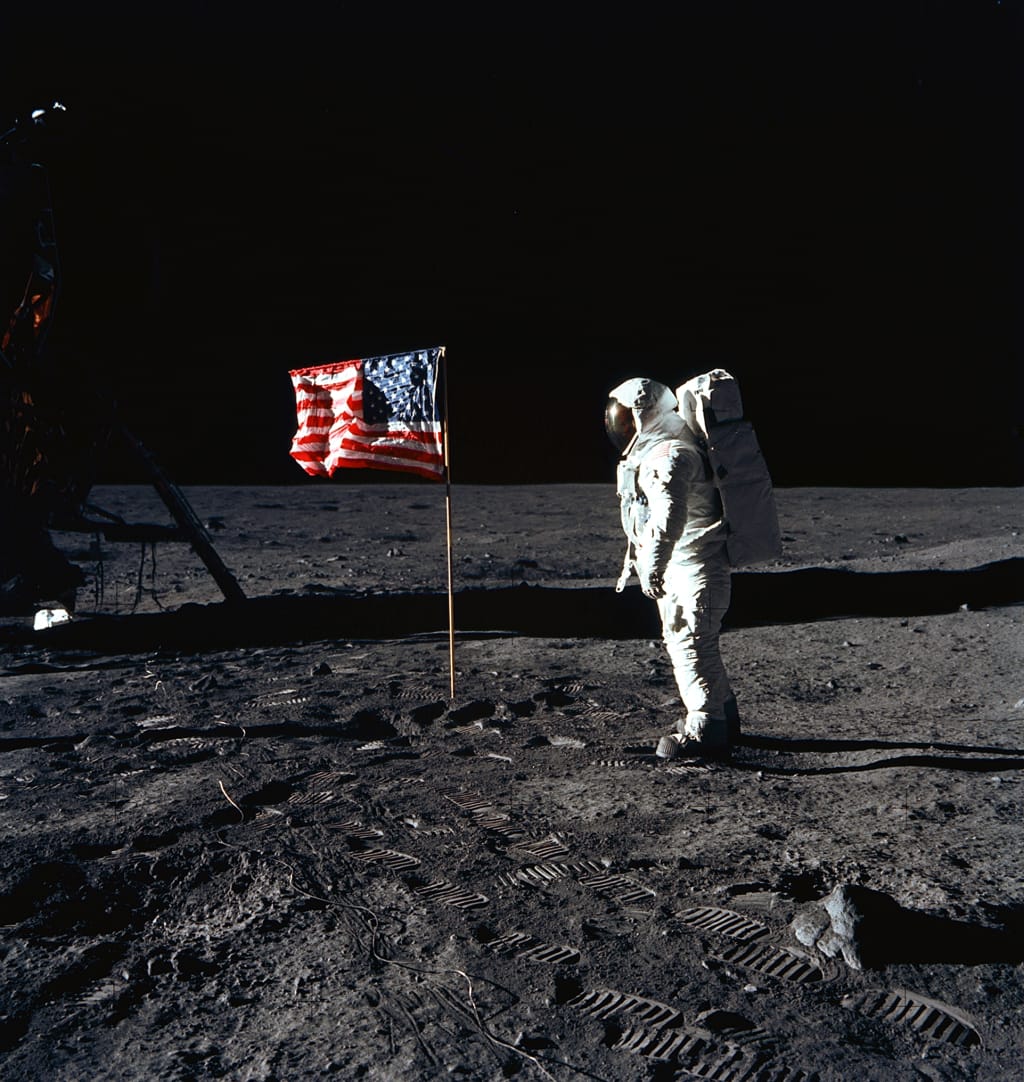Although it took an excessive amount of resources to get to Apollo 11, it showed why, even 50 years later, landing a man on the Moon mattered.
“That’s one small step for [a] man, one giant leap for mankind.”
When Neil Armstrong stepped foot on the Moon in July of 1969, the world took a large sigh of relief. It had taken a lot of time, money, and a lot of manpower to reach that moment. After the Apollo 1 fire in 1967 that killed astronauts Virgil “Gus” Grissom, Edward H. White, and Roger Chaffee, most wondered if it was even worth going to the Moon. Apollo 11 proved it was.
Although it took an excessive amount of resources to get to Apollo 11, it showed why, even 50 years later, landing a man on the Moon mattered.
During the 1960s, the Space Race was in full effect. The Soviet Union, with Nikita Khrushchev as its leader, seemed miles ahead of the United States at the turn of the decade. The current administration had enhanced the military but chose to largely ignore the opportunity that space held. The National Advisory Committee for Aeronautics (NACA) was founded in 1915 and was one of the first government-funded organizations to promote aeronautical research. In 1958, President Dwight D. Eisenhower chose to dismantle NACA, and form a new government organization, the National Aeronautics and Space Administration (NASA).
On October 1, 1958, Eisenhower signed an executive order to put NASA into effect. This act transferred, “certain functions from the Department of Defense to the National Aeronautics and Space Administration.” After dissolving NACA, Eisenhower had finally created NASA and increased its annual budget to $100 million.
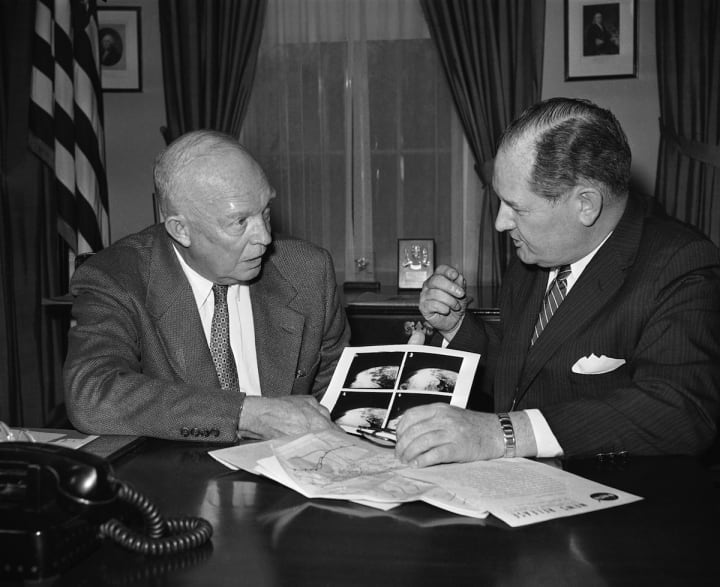
By 1960, the United States had already fallen in love with the first group of astronauts apart of NASA. Scott Carpenter, Gordon Cooper, John Glenn, Gus Grissom, Wally Schirra, Alan Shepard, and Deke Slayton, otherwise known as the Mercury Seven, which was assembled to fly selected spacecraft for Project Mercury. From the very start, they were a group of celebrities before they even ventured into the great unknown.
The most well-known mission the Mercury Seven would accomplish was Mercury-Atlas 6. Flying in Friendship 7, John Glenn would become the first American to orbit the Earth.
“I don’t know what you could say about a day in which you have seen four beautiful sunsets.”

When John F. Kennedy was elected president at the end of 1960, you could feel the air change. The Eisenhower years were long, but Kennedy’s campaign was surrounded by the idea of the “New Frontier” that was already being marketed by various publications. As a senator, he pushed for the American people to care more about space. This wasn’t a race they could afford to lose to the communists.
At this time, the Soviet Union was pulling ahead in space flight. They had already launched the first satellite with Sputnik, sent the first dog into space and on April 12, 1961, Yuri Gagarin became the first man to journey into outer orbit. Shortly after Gagarin’s successful flight, the newly elected president made a speech to a joint session of Congress. On May 25, 1961, President Kennedy made a challenge to America; they would send a man to the moon before the 1960s came to a close.
Kennedy would continue to pursue this national goal by allocating $1.2 billion to NASA in 1962, and doubling that number in 1963. In September 1962, to a crowd at Rice Stadium in Texas, he gave one of the most memorable speeches of his career.
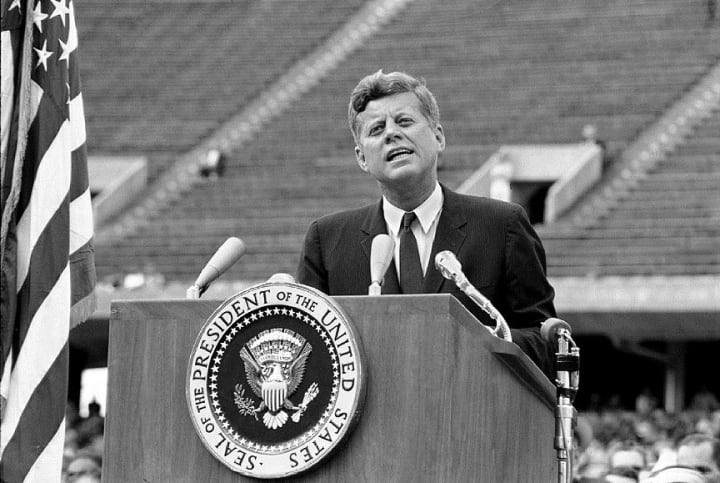
“But why, some say, the Moon? Why choose this as our goal? And they may well ask, why climb the highest mountain? Why, 35 years ago, fly the Atlantic? Why does Rice play Texas? We choose to go to the Moon… We choose to go to the Moon in this decade and do the other things, not because they are easy, but because they are hard; because that goal will serve to organize and measure the best of our energies and skills, because that challenge is one that we are willing to accept, one we are unwilling to postpone, and one we intend to win, and the others, too.”
With the idealism of Kennedy mixed together with NASA’s own Wernher von Braun’s futurist take on engineering, the Space Race became America’s objective. The death of President Kennedy in 1963 left the nation to carry on his dream without him.
Following the Mercury missions was Project Gemini. Beginning in 1961 and ending in 1966, these missions were to develop space travel techniques in order to help the Apollo mission get astronauts to the Moon. Edward White conducted the first American spacewalk in 1965 with Gemini 4. Gemini 5 introduced the world to the naval aviator and test pilot, Neil Armstrong. This is when the United States began to pull way ahead.
There are three Apollo missions that stand out in everyone’s mind: Apollo 1, Apollo 8, and of course, Apollo 11.
On January 27, 1967, the three-man crew of Grissom, White, and Chaffee were doing a standard rehearsal test for the Apollo 1 flight next month. Due to an electrical malfunction and the cabin being filled with pure oxygen, the spacecraft caught on fire instantly, killing all three men inside. The flight was officially retired in commemoration of them.
Apollo 8 was the first flight around the Moon. Launched on December 21, 1968, it became known for the first time we were provided with a full view of our very own planet. “Earthrise” was the title given to the photo taken by Bill Anders, showing the Earth from the Moon’s perspective. The crew of Anders, Frank Borman and Jim Lovell would then go on to quote the Book of Genesis as they entered lunar orbit on Christmas Eve.
“And from the crew of Apollo 8, we close with good night, good luck, a Merry Christmas, and God bless all of you—all of you on the good Earth.”
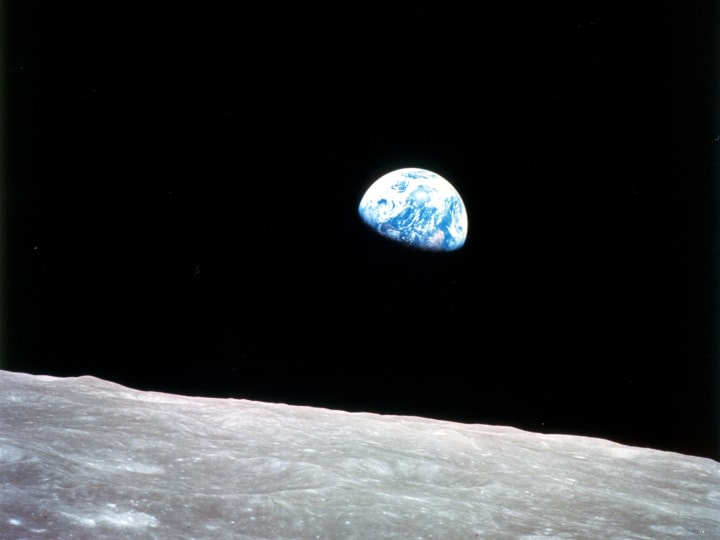
The entire world was at a standstill when Apollo 11 launched on July 16, 1969. The crew of Armstrong, Edwin “Buzz” Aldrin, and Michael Collins set off to discover a new world. Their four-day trek to the Moon went without problems until Armstrong and Aldrin needed to land. The landing was basically a prepared fall, and it went haywire as Armstrong almost ran out of fuel trying to avoid docking in a large crater.
Finally, on July 20, 1969, Kennedy’s dream had been realized.
For just over the two hours Armstrong and Aldrin spent on the Moon, everything completely stopped. At that moment, the whole world was together to witness something truly remarkable happen. The Moon suddenly changed from an object we had only ever seen, to a place we could now visit.
The three brave heroes returned back to Earth on July 24, 1969. As the country embraced the astronauts, NASA had no time to rest as they planned Apollo 12 for later that same year.
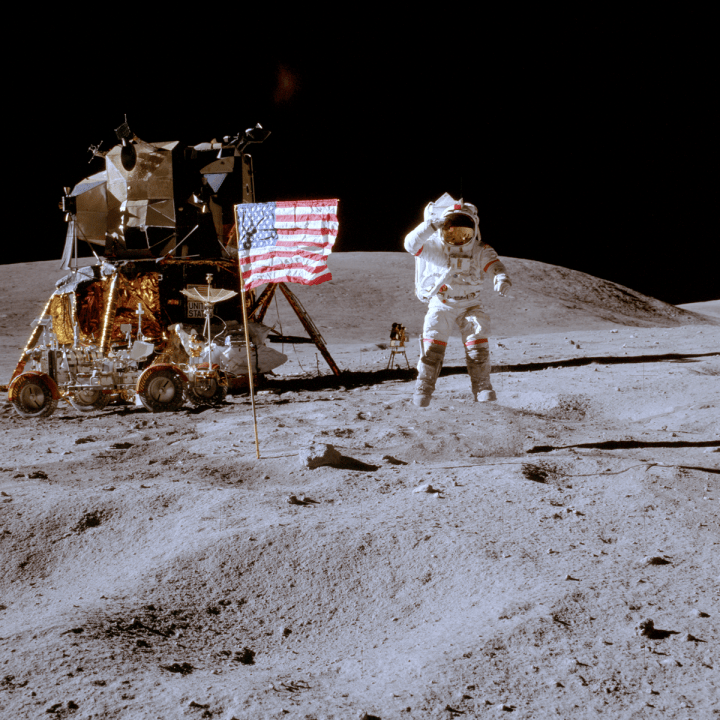
The United States would successfully visit the moon five more times, the last time being in 1972. On top of that, no other country has ever been to the moon.
So, what was this all for?
Where sci-fi had been only a dream in books and movies of the 1950s, that dream became a reality during the 1960s. Astronauts made their way through popular culture of the “swinging sixties” that embraced change and adventure.
A man landed on the Moon 50 years ago, because it was time. Technology had developed at such an enormous rate that everyone could watch the continuous coverage of this harrowing mission. In over the 4.5 billion years of the Earth’s existence, landing a man on the Moon in 1969 was this one time where the whole world could come together and believe in something far greater than ourselves.
JFK’s Rice University speech perfectly sums up the reason we went to the moon. Striving for a goal that everyone could get behind, organizing the country’s skills and advancing science at an extreme rate only gave us the drive to go further. It was an unknown place that was going to be difficult to get to. Someone ultimately had to do it, not because it was easy, but because it was hard.
